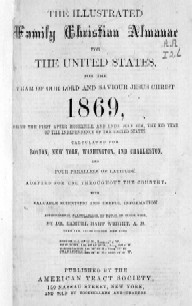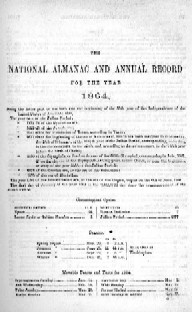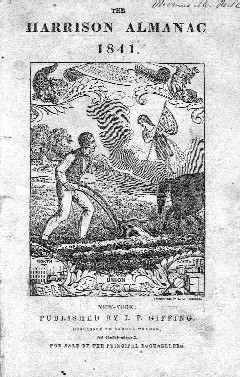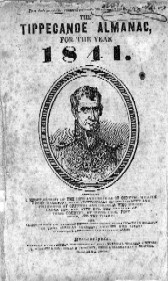| What is an Almanac? Almanacs are books that provide information about a certain subject that is usually updated and republished on a regular basis. Archaeologists have found various forms of almanacs among the remains of prehistoric cultures. The ancient Chinese, Aztecs, Egyptians, Celts, Romans and many other civilizations all had versions of almanacs. In Western culture, almanacs have been a popular form of reading material since the 1400s when printing presses became widely used, and book printing became faster and easier. Most early almanacs provided astronomical information, and later versions in the 1700s became truly scientific, such as the British Nautical Almanac founded in 1767. This form of almanac, as it was introduced into the New World in the 1600s, included three types of information: some form of calendar, astronomical information about the phases of the moon and weather predictions to help farmers, and stories that often combined fact and fantasy to entertain the reader.
The almanacs featured in this exhibition are examples of the popular almanacs that were well known in Europe and developed in America in the 1700s. At this time the popular almanac developed into a unique form of folk literature that included the astrological and weather-related information that were part of the historical almanacs, but also included statistics and home remedies, and expanded the literary portion to include jokes, fiction and poetry. The first known printed book in British North America was an almanac, printed in 1639. Some examples of early almanacs included Nathaniel Ames' Astronomical Diary and Almanack begun in 1725, and Benjamin Franklin's Poor Richard's Almanack published from 1732 - 1757. Perhaps the best-known American almanac, because it is still available today, is The Old Farmer's Almanack, begun by Robert Baily Thomas in 1793.
|

|

|

|

|

|
Almanacs were printed in virtually every American town that had its own printing press. They were found in homes where the only other book was a Bible. The Poor Richard’s Almanack sold 10,000 copies in Philadelphia when that city had only 15,000 residents. Early editions of The Farmer’s Almanack (now The Old Farmer’s Almanack) sold 100,000 copies, and even into the 1850s the Christian Almanac sold over 300,000 copies a year. Part of what contributed to their popularity and widespread appeal was their availability: American almanacs were published in a wide variety of languages including Cherokee, Chippewa, Choctaw, Delaware, Ottowa and Shawanoe dialects, as well as in Dutch, French, German, Hawaiian, Hebrew, Norwegian, Spanish, Swedish, Russian, Italian, Polish, Danish and Hungarian.
|

|
To get a sense of how important almanacs were in early America, we can look to an article by Dr. Nathaniel Low published in An Astronomical Diary: or Almanack for 1786: “…it is easy to prove that no book we read (except the Bible) is so much valued, and so serviceable to the community. Almanacks serve as clocks and watches for nine-tenths of mankind; and in fair weather are far more sure and regular than the best time-piece manufactur’d here or in London. Twenty gentlemen in company will hardly be able, by the help of their thirty-guinea watches, to guess within two hours of the true time of night. One says it is nine o’clock, another half after eight - a third, half after ten; whilst the poor peasant, who never saw a watch, will tell the time to a fraction, by the rising and setting of the moon, and some particular stars, which he learned from his almanack.” In addition to helping the common man keep accurate time, the almanac provided meteorological information. According to Illinois court records, attorney Abraham Lincoln was able to discredit a witness and win the case by using a Farmer’s Almanac to prove there was a lack of moonlight on the night of a murder, thus the witness could not have clearly seen the crime.
|
| Early American almanacs were used for political propaganda supporting the Revolution, as in the North American Almanack for 1769 that included a copper plate engraving by Paul Revere showing “Britain enthroned and richly decorated, and America in the utmost agonies of distress and horror.” Philo’s Essex Almanack for 1770 included an editorial “The Importance of Publick Liberty” passionately encouraging Americans to die for freedom, six years before the start of the revolution, and once it started other almanacs included detailed reports of the battles, including lists of killed, wounded and missing. As settlers moved west, the demand for and production of almanacs moved with them. In 1806 Joseph Charless of St. Louis produced the Kentucky, Tennessee, and Ohio Almanac prior to starting the first newspaper in Missouri - the Missouri Gazette.
| 
|

|
In the nineteenth century several changes occurred in American almanacs. Most noticeable was the dropping of the “k” from almanack in many publications, but more important was the development of special interest almanacs issued by political parties, religious groups, labor organizations, business promoters and many others. At this time the comic almanacs also appeared, led by the American Comic Almanac published in Boston in 1831 and quickly followed by Elton’s Comic All-My-Nack, Broad Grins, Tragical & Piratical Almanac, World All-Maniac, and, of course, Davy Crockett’s Almanack of Wild Sports of the West - clearly the forerunners of today’s comics and joke books.
|
Almanacs in this exhibit can be seen in the Reading Room of the Mercantile Library at the University of Missouri - St. Louis.
For a list of available almanacs CLICK HERE.
|








